Casio WV-58DE-1AVEG Handleiding
Bekijk gratis de handleiding van Casio WV-58DE-1AVEG (5 pagina’s), behorend tot de categorie Horloge. Deze gids werd als nuttig beoordeeld door 37 mensen en kreeg gemiddeld 4.6 sterren uit 19 reviews. Heb je een vraag over Casio WV-58DE-1AVEG of wil je andere gebruikers van dit product iets vragen? Stel een vraag
Pagina 1/5

Operation Guide 3053
1
MO0609-EA
Getting Acquainted
Congratulations upon your selection of this CASIO watch. To get the most out of your
purchase, be sure to read this manual carefully.
Caution!
Your watch is shipped with it Auto Display feature (which continually changes the
contents of the digital display) turned on. Calibration signal reception is disabled while
Auto Display is turned on.
Press any button to turn off Auto Display and return to the Timekeeping Mode.
About This Manual
•Button operations are indicated using the letters shown
in the illustration.
•Each section of this manual provides you with the
information you need in order to perform operations in
each mode. Fur ther details and technical information
can be found in the “Reference” section.
▲
▲
Countdown Timer Mode
Stopwatch ModeAlarm Mode
Timekeeping Mode
Press .C
▲
World Time Mode
▲
▲
General Guide
•Press C to change from mode to mode.
•In any mode (except when a setting screen is on the display), press to illuminateB
the display.
Radio-controlled Atomic Timekeeping
This watch receives a time calibration signal and updates
its time setting accordingly.
•Supported time calibration signals: Germany
(Mainflingen), England (Rugby), United States (Fort
Collins), Japan.
Current Time Setting
This watch adjusts its time setting automatically in
accordance with a time calibration signal. You can also
perform a manual procedure to set the time and date,
when necessary.
•The first thing you should do after purchasing this watch
is to specify your Home City (the city where you
normally will use the watch). For more information, see
“To specify your Home City”.
PM
indicator
Month – Day
Year
Day of week
Home Time
(Hour : Minutes Seconds)
•When using the watch outside the areas covered by the time signal transmitters, you
will have to adjust the current time setting manually as required. See “ ”Timekeeping
for more information about manual time settings.
•The U.S. time calibration signal can be picked up by the watch while in North
America. The term “North America in this manual refers to the area that consists of”
Canada, the continental United States, and Mexico.
To specify your Home City
1. In the Timekeeping Mode, hold down A until the city
code starts to flash, which indicates the setting screen.
2. Press (east) and (west) to select the city code youD B
want to use as your Home City.
•Time calibration signal reception is supported when
any one of the city codes shown in the table below is
selected as your Home City.
l
l
l
l
l
l
l
l
l
l
l
City code
German/U.K. Signal Japan Signal U.S. Signal
City
Code
LIS
LON
MAD
PAR
ROM
BER
STO
City
Name
Lisbon
London
Madrid
Paris
Rome
Berlin
Stockholm
City
Code
ATH
MOW
City
Name
Athens
Moscow
City
Code
HNL
ANC
YVR
LAX
YEA
DEN
MEX
City
Name
Honolulu
Anchorage
Vancouver
Los Angeles
Edmonton
Denver
Mexico City
City
Code
YWG
CHI
MIA
YTO
NYC
YHZ
YYT
City
Name
Winnipeg
Chicago
Miami
Toronto
New York
Halifax
St. Johns
City
Code
HKG
BJS
TPE
SEL
TYO
City
Name
Hong Kong
Beijing
Taipei
Seoul
Tokyo
3. Press A to exit the setting screen.
Important!
•Normally, your watch should show the correct time as soon as you select your Home
City code. If it does not, it should adjust automatically after the next auto receive
operation (in the middle of the night). You can also perform manual receive or you
can set the time manually.
•The watch will receive the time calibration signal automatically from the applicable
transmitter (in the middle of the night) and update its settings accordingly. For
information about the relationship between city codes and transmitters, see “Home
City Codes and Transmitters”.
•Under factory default settings, auto receive is turned off for all of the following city
codes: MOW HKG (Moscow), (Hong Kong), (Beijing), (Honolulu), andBJS HNL
ANC (Anchorage). For details about turning on auto receive for these city codes, see
“To turn auto receive on and off”.
•You can disable time signal reception, if you want. See To turn auto receive on and“
off” for more information.
•See the maps under “ ”Reception Ranges for information about the reception ranges
of the watch.
•If you are in an area that does not use Daylight Saving Time (summer time), turn off
the DST setting.
Time Calibration Signal Reception
There are two different methods you can use to receive the time calibration signal:
auto receive and manual receive.
•Auto Receive
With auto receive, the watch receives the time calibration signal automatically up to
six times a day. When any auto receive is successful, the remaining auto receive
operations are not performed. For more information, see About Auto Receive .“ ”
•Manual Receive
Manual receive lets you start a time calibration receive operation with the press of a
button. For more information, see “To perform manual receive”.
Important!
•When getting ready to receive the time calibration signal, position the watch as
shown in the nearby illustration, with its 12 o’clock side facing towards a window.
Make sure there are no metal objects nearby.
12 o clock’
or
•Make sure the watch is facing the right way.
•Proper signal reception can be difficult or even impossible under the conditions listed
below.
•Signal reception normally is better at night than during the day.
•Time calibration signal reception takes from two to seven minutes, but in some
cases it can take as long as 14 minutes. Take care that you do not perform any
button operations or move the watch during this time.
Inside or
among
buildings
Inside a
vehicle
Near
household
appliances,
office
equipment,
or a mobile
phone
Near a
construction
site, airport,
or other
sources of
electrical
noise
Near high-
tension
power lines
Among or
behind
mountains
•The time calibration signal the watch will attempt to pick up depends on its current
Home City code setting as shown below. If you use the watch in Japan or Europe
(each of which has two different transmitter locations), it will try to receive the time
calibration signal from one of the transmitters in your current location. If it cannot
receive the signal, it will then try to receive the time calibration signal from the other
transmitter.
Home City Code
LIS, LON,
MAD, PAR, ROM, BER,
STO, ATH, MOW*
HKG*, BJS*, TPE,
SEL, TYO
HNL*, ANC*, YVR,
LAX, YEA, DEN, MEX,
YWG, CHI, MIA, YTO,
NYC,YHZ, YYT
Frequency
60.0 kHz
77.5 kHz
40.0 kHz
60.0 kHz
60.0 kHz
Transmitter
Rugby (England)
Mainflingen (Germany)
Fukushima (Japan)
Fukuoka/Saga (Japan)
Fort Collins, Colorado
(the United States)
Home City Codes and Transmitters
* The areas covered by the MOW HKG BJS HNL, , , , and ANC city codes are quite
far from the time calibration signal transmitters, and so certain conditions may
cause problems with signal reception.

Operation Guide 3053
2
Reception Ranges
Rugby
Mainflingen
500 kilometers
Fort Collins
600 miles
(1,000 kilometers)
Fukuoka/Saga
500 kilometers Fukushima
500 kilometers
U.K. and German Signals
U.S. Signal
Japan Signal
1,500 kilometers 2,000 miles
(3,000 kilometers)
1,000 kilometers
1,000 kilometers
•Signal reception may not be possible at the distances noted below during certain
times of the year or day. Radio interference may also cause problems with reception.
Mainflingen (Germany) or Rugby (England) transmitters: 500 kilometers (310
miles)
Fort Collins (United States) transmitter: 600 miles (1,000 kilometers)
Fukushima or Fukuoka/Saga (Japan) transmitters: 500 kilometers (310 miles)
•Even when the watch is within the reception range of the transmitter, signal
reception will be impossible if the signal is blocked by mountains or other geological
formations between the watch and signal source.
•Signal reception is affected by weather, atmospheric conditions, and seasonal
changes.
•See the information under “Signal Reception Troubleshooting” if you experience
problems with time calibration signal reception.
About Auto Receive
The watch receives the time calibration signal automatically up to six times a day.
When any auto receive is successful, the remaining auto receive operations are not
performed. The reception schedule (calibration times) depends on your currently
selected Home City, and whether standard time or Daylight Saving Time is selected
for your Home City.
Your Home City Auto Receive Start Times
123456
LIS, LON
MAD, PAR, ROM,
BER, STO
Standard Time
Daylight
Saving Time
Standard Time
Daylight
Saving Time
1:00 am
2:00 am
2:00 am
3:00 am
2:00 am
3:00 am
3:00 am
4:00 am
3:00 am
4:00 am
4:00 am
5:00 am
4:00 am
5:00 am
5:00 am
Midnight
next day
5:00 am
Midnight
next day
Midnight
next day
1:00 am
next day
Midnight
next day
1:00 am
next day
1:00 am
next day
2:00 am
next day
ATH
MOW
HKG, BJS, TPE,
SEL, TYO
HNL, ANC, YVR,
LAX, YEA, DEN,
MEX, YWG, CHI,
MIA, YTO, NYC,
YHZ, YYT
Standard Time
Daylight
Saving Time
Standard Time
Daylight
Saving Time
Standard Time
Standard Time
Daylight
Saving Time
3:00 am
4:00 am
4:00 am
5:00 am
Midnight
Midnight
4:00 am
5:00 am
5:00 am
Midnight
next day
1:00 am
1:00 am
5:00 am
Midnight
next day
Midnight
next day
1:00 am
next day
2:00 am
2:00 am
Midnight
next day
1:00 am
next day
1:00 am
next day
2:00 am
next day
3:00 am
3:00 am
1:00 am
next day
2:00 am
next day
2:00 am
next day
3:00 am
next day
4:00 am
4:00 am
2:00 am
next day
3:00 am
next day
3:00 am
next day
4:00 am
next day
5:00 am
5:00 am
Note
•When a calibration time is reached, the watch will receive the calibration signal only
if it is in either the Timekeeping Mode or World Time Mode. Reception is not
performed if a calibration time is reached while you are configuring settings.
•Auto receive of the calibration signal is designed to be performed early in the
morning, while you sleep (provided that the Timekeeping Mode time is set correctly).
Before going to bed for the night, remove the watch from your wrist, and put it in a
location where it can receive the signal easily.
•The watch receives the calibration signal for two to seven minutes everyday when
the time in the Timekeeping Mode reaches each of the calibration times. Avoid
performing any button operation within seven minutes before or after any one of the
calibration times. Doing so can interfere with correct calibration.
•Remember that reception of the calibration signal depends on the current time in the
Timekeeping Mode. The receive operation will be performed whenever the display
shows any one of the calibration times, regardless of whether or not the displayed
time actually is the correct time.
About the Receiving Indicator
The receiving indicator shows the strength of the calibration signal being received.
For best reception, be sure to keep the watch in a location where signal strength is
strongest.
Receiving
indicator
•Even in an area where signal strength is strong, it takes about 10 seconds for signal
reception to stabilize enough for the receiving indicator to indicate signal strength.
•Use the receiving indicator as a guide for checking signal strength and for finding the
best location for the watch during signal receive operations.
•Following reception of the time calibration signal and calibration of the watch’s time
setting, the Level 3 receiving indicator will remain on the display in all modes. The
Level 3 receiving indicator will not be displayed if signal reception was unsuccessful
or after you adjust the current time setting manually.
Weak
(Level 0)
Strong
(Level 3)
•The Level 3 receiving indicator is displayed only when the watch is able to receive
both time and date data successfully. It does not appear when only time data is
received.
•The Level 3 receiving indicator indicates that at least one of the auto calibration
signal receive operations was successful. Note, however, that the Level 3 receiving
indicator is cleared from the display when the first auto receive operation of the day
is performed.
To perform manual receive
1. Place the watch on a stable surface so its top (12
o’clock side) is facing towards a window.
2. In the Timekeeping Mode, hold down D for about two
seconds until appears on the display.RC!
•Time calibration signal reception takes from two to
seven minutes. Take care that you do not perform any
button operations or move the watch during this time.
•After signal reception is complete, the display of the
watch changes to the Last Signal screen.
Receiving indicator
Note
•To interrupt a receive operation and return to the Timekeeping Mode, press D.
•If the receive operation is unsuccessful, the message ERR appears on the display
for about one or two minutes. After that, the watch returns to the Timekeeping Mode.
•You can also change from the Last Signal or ERR screen to the normal
timekeeping screen by pressing D.
•Calibration signal reception is disabled while a countdown timer operation is in
progress.
To turn auto receive on and off
1. In the Timekeeping Mode, press D to display the Last
Signal screen.
2. Hold down A until the receiving indicator and current
auto receive setting ( or ) start to flash. This is
the setting screen.
•Note that the setting screen will not appear if the
currently selected Home City is one that does not
support time calibration reception.
3. Press D to toggle auto receive on ( ) and off ( ).
On/Off Status
l
l
l
l
l
l
l
l
l
l
l
l
l
l
l
l
l
l
l
l
l
l
4. Press A to exit the setting screen.
•For information about city codes that support signal receive, see “To specify your
Home City”.
To display the Last Signal screen
In the Timekeeping Mode, press to display the Last Signal screen (indicated byD
GET). The Last Signal screen shows the date and time of the last successful time
calibration signal reception.
Last Signal Screen
▲
Press D.
▲
Current Time and Date Screen
PM indicator
Month – Day
Day of week Home Time
(Hour : Minutes Seconds)
Receive date
Receive time
Year
Signal Reception Troubleshooting
Check the following points whenever you experience problems with calibration signal
reception.
Problem
Cannot perform
manual receive.
Auto receive is
turned on, but
the Level 3
receiving
indicator does
not appear on
the display.
Time setting is
incorrect
following signal
reception.
Probable Cause
•
The watch is not in the Timekeeping Mode.
•Your current Home City is not one of the
following city codes:
LIS, LON, MAD, PAR, ROM, BER,
STO, ATH , MOW HKG, , BJS TPE, ,
SEL, TYO HNL, , ANC, YVR, LAX YEA, ,
DEN, MEX YWG, , CHI MIA, , YTO, NYC,
YHZ YYT, or
•The countdown timer is running.
•You changed the time setting manually.
•The watch was not in the Timekeeping
or World Time Mode, or you performed
some button operation during the auto
receive operation.
•Even if receive is successful, the Level
3 receiving indicator disappears ever y
day when the first auto receive
operation of the day is performed.
•Time data (hour, minutes, seconds) only
was received during the last receive
operation. The Level 3 receiving
indicator appears only when time data
and date data (year, month, day) are
both received.
•If the time is one hour off, the DST
setting may be incorrect.
•The Home City code setting is not
correct for the area where you are using
the watch.
What you should do
•Enter the Timekeeping Mode
and try again.
•Select , , , LIS LON MAD PAR,
ROM, BER STO, , ATH, MOW,
HKG, BJS TPE, , SEL, TYO,
HNL, ANC YVR, , , LAX YEA,
DEN MEX, , YWG CHI MIA, , ,
YTO, NYC, YHZ YYT, or as
your Home City.
•Stop the countdown timer and
try again.
•Perfor m manual signal receive
or wait until the next auto
signal receive operation is
performed.
•Check to make sure the
watch is in a location where it
can receive the signal.
•Change the DST setting to
Auto DST.
•Select the correct Home City
code.
•For further information, see “ ”Important! under “ ”Time Calibration Signal Reception
and “Radio-controlled Atomic Timekeeping Precautions”.
World Time
The World Time Mode shows you the current time in 48
cities (29 time zones) around the world.
•If the current time shown for a city is wrong, check your
Home City time settings and make the necessary
changes.
•All of the operations in this section are performed in the
World Time Mode, which you enter by pressing C.
City code
Timekeeping
Mode time
Current time in selected city
UTC
differential
To view the time in another city
While in the World Time Mode, press to scroll eastward through the city codesD
(time zones).
•For full information on city codes, see the City Code Table“ ”.

Operation Guide 3053
3
To toggle a city code time between Standard Time and Daylight Saving Time
1. In the World Time Mode, use D to display the city code
(time zone) whose Standard Time/Daylight Saving Time
setting you want to change.
2. Hold down A to toggle Daylight Saving Time (DST
indicator displayed) and Standard Time (DST indicator
not displayed).
•The DST indicator will appear whenever you display a
city code for which Daylight Saving Time is turned on.
•Note that the DST/Standard Time setting affects only the
currently displayed city code. Other city codes are not
affected.
DST indicator
Countdown Timer
You can set the countdown timer within a range of one to
60 minutes. An alarm sounds when the countdown
reaches zero.
•All of the operations in this section are performed in the
Countdown Timer Mode, which you enter by pressing
C.
Timekeeping Mode time
(Hour : Minutes Seconds)
Minutes Seconds
To set the countdown start time
1. While the countdown start time is on the display in the Countdown Timer Mode,
hold down until the current countdown start time starts to flash, which indicatesA
the setting screen.
•If the countdown start time is not displayed, use the procedure under “To use the
countdown timer” to display it.
2. While a setting is flashing, use D B (+) and ( ) to change it.–
3. Press A to exit the setting screen.
To use the countdown timer
Press while in the Countdown Timer Mode to start the countdown timer.D
•When the end of the countdown is reached, the alarm sounds for 10 seconds or until
you stop it by pressing any button. The countdown time is reset automatically to its
starting value after the alarm stops.
•Press D while a countdown operation is in progress to pause it. Press again toD
resume the countdown.
•To stop a countdown operation completely, first pause it (by pressing ), and thenD
press A. This returns the countdown time to its starting value.
•Calibration signal reception is disabled while a countdown timer operation is in
progress.
Stopwatch
The stopwatch lets you measure elapsed time, split times,
and two finishes.
•The display range of the stopwatch is 59 minutes, 59.99
seconds.
•The stopwatch continues to run, restarting from zero
after it reaches its limit, until you stop it.
•Exiting the Stopwatch Mode while a split time is frozen
on the display clears the split time and returns to
elapsed time measurement.
•The stopwatch measurement operation continues even
if you exit the Stopwatch Mode.
•All of the operations in this section are performed in the
Stopwatch Mode, which you enter by pressing C.
1/100
seconds
Timekeeping Mode time
(Hour : Minutes Seconds)
Minutes Seconds
To measure times with the stopwatch
D
Start Stop
Elapsed Time
➤
Re-start Clear
D➤
Stop
D➤D➤A
Split Time
D
Start Split
(SPL displayed)
➤
Split release Clear
A➤
Stop
A➤D➤A
Two Finishes
D
Start Split
➤
Stop Clear
A➤
Split release
D➤
A➤A
First runner
finishes.
Display time of
first runner.
Second runner
finishes.
Display time of
second runner.
Alarm
After you set (and turn on) the daily alarm, the alarm tone
sounds when the alarm time is reached. You can also turn
on an Hourly Time Signal that causes the watch to beep
for about one second every hour on the hour.
•All of the operations in this section are performed in the
Alarm Mode, which you enter by pressing C.
Timekeeping Mode time
(Hour : Minutes Seconds)
Alarm time
(Hour : Minutes)
Hourly time
signal on
indicator
Alarm on
indicator
To set the alarm time
1. In the Alarm Mode, hold down A until the hour setting
of the alarm time starts to flash, which indicates the
setting screen.
•This automatically turns on the alarm.
2. Press C to move the flashing between the hour and
minute settings.
3. While a setting is flashing, use D B (+) and ( ) to change it.–
•When setting the alarm time using the 12-hour format, take care to set the time
correctly as a.m. (A indicator) or p.m. ( indicator).P
4. Press A to exit the setting screen.
Alarm Operation
The alarm sounds at the preset time for about 10 seconds (in all modes), or until you
stop it by pressing any button.
l
l
l
l
l
l
l
l
l
l
To test the alarm
In the Alarm Mode, hold down to sound the alarm.D
To turn the daily alarm and the Hourly Time Signal on and off
In the Alarm Mode, press D to cycle through the settings shown below.
•The alarm on indicator and the Hourly Time Signal on indicator are shown on the
display in all modes while these functions are turned on.
Alarm On Indicator / Hourly Time Signal On Indicator
Alarm Off
Signal Off
Alarm On
Signal Off
Alarm Off
Signal On
Alarm On
Signal On
Timekeeping
Use the Timekeeping Mode to set and view the current time and date.
•When setting the time, you can also configure settings for the City Code, the DST
setting, the 12/24-Hour Format, Year, Month, Day, the Language setting, and the
Month/Day display format, and you can specify the screens that are displayed in the
Timekeeping Mode.
•Pressing D in the Timekeeping Mode will display the Last Signal screen.
▲
Press D.
▲
Last Signal ScreenCurrent Time and Date Screen
Note
This watch is capable of displaying text for the day of the week in any one of 9
different languages (English, Spanish, French, Portuguese, German, Italian, Chinese,
Russian, and Japanese).
l
l
l
l
l
l
l
l
l
l
l
Setting the Time and Date
Make sure you select your Home City code before you change the current time and
date settings. World Time Mode times are all displayed in accordance with the
Timekeeping Mode settings. Because of this, World Time Mode times will not be
correct if you do not select the proper Home City code before setting the time and
date in the Timekeeping Mode.
To set the time and date
1. In the Timekeeping Mode, hold down A until the city
code starts to flash, which indicates the setting screen.
2. Press C to change the flashing contents in the
sequence shown below to select other settings.
City code
3. When the setting you want to change is flashing, use B D and/or to change it as
described below.
Seconds Hour Minutes
12/24-Hour
Format
Month Year
DST
Day
Language
City Code
Month/Day Display Format
Screen: To do this:
Change the city code
Cycle between auto DST ( ), Standard Time
( ), and Daylight Saving Time ( )
Toggle between 12-hour (12H) and 24-hour
(2 H4) timekeeping
Do this:
Use D (east) and
B (west).
Press D.
Press D.
Reset the seconds to
Change the hour, minutes, or year
Change the month or day
Change the language
ENG: English : Spanish : FrenchESP FRA
POR: Portuguese DEU: German
ITA CHN: Italian : Chinese RUS: Russian
JPN: Japanese
Toggle the month/day display format between
month/day (M/D) and day/month (D/M).
Press D.
Use D (+) and B
(–).
Use .D and B
Press D.
Product specificaties
| Merk: | Casio |
| Categorie: | Horloge |
| Model: | WV-58DE-1AVEG |
| Gewicht: | 87.2 g |
| Breedte: | 43.7 mm |
| Diepte: | 12 mm |
| Hoogte: | 53.4 mm |
| Type horloge: | Horloge |
| Mechanismetype: | Quartz |
| Type wijzerplaat horloge: | Led-wijzerplaat |
| Waterdicht: | Ja |
| Stopwatch: | Ja |
| Countdown timer: | Ja |
| Waterbestendig druk: | 5 ATM |
| Wereldklok functie: | Ja |
| Alarm functie: | Ja |
| Agenda: | Ja |
| Klokmodus: | 12/24 uur |
| Afteltimer maateenheden: | Hour,Minute |
| Meetcapaciteit stopwatch: | 1/100 |
| Type kalender: | Date,Day,Month |
| Horlogekast materiaal: | Resin,Stainless steel |
| Kleur behuizing: | Zilver |
| Band materiaal: | Roestvrijstaal |
| Hoofdkleur van band: | Zilver |
| Glas type van horloge: | Acryl |
| Hoesvorm: | Rond |
| Hoofdkleur van wijzerplaat: | Grijs |
| Vormgeving: | Sport |
| Geslacht: | Unisex |
| Levensduur batterij/accu: | 2 jaar |
| Stijl becijfering horloge: | Geen becijfering |
| Hoofdkleur kast: | Zilver |
| Radio signaal ontvanger: | EU, USA, Japan |
| Productontwerp: | Sport |
Heb je hulp nodig?
Als je hulp nodig hebt met Casio WV-58DE-1AVEG stel dan hieronder een vraag en andere gebruikers zullen je antwoorden
Handleiding Horloge Casio
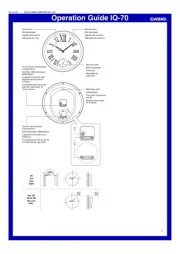
18 Juni 2025
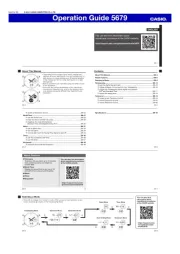
17 Juni 2025
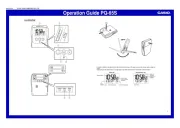
17 Juni 2025
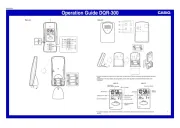
16 Juni 2025

16 Juni 2025
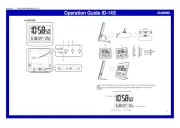
16 Juni 2025
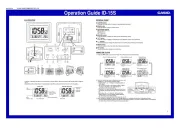
16 Juni 2025
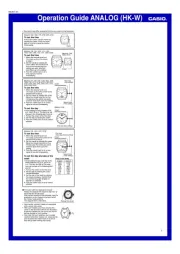
16 Juni 2025
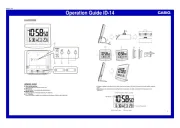
16 Juni 2025
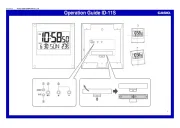
16 Juni 2025
Handleiding Horloge
- PANERAI
- Gc
- Hamilton
- Spinnaker
- ETT
- Bulova
- Tikkers
- Easypix
- Huawei
- Wonky Monkey
- TomTom
- Philip Watch
- Fitbit
- TW Steel
- Topcom
Nieuwste handleidingen voor Horloge

2 September 2025

1 September 2025

1 September 2025

1 September 2025

31 Augustus 2025

19 Augustus 2025
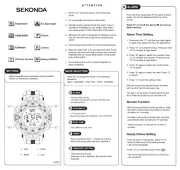
19 Augustus 2025

18 Augustus 2025

18 Augustus 2025

18 Augustus 2025